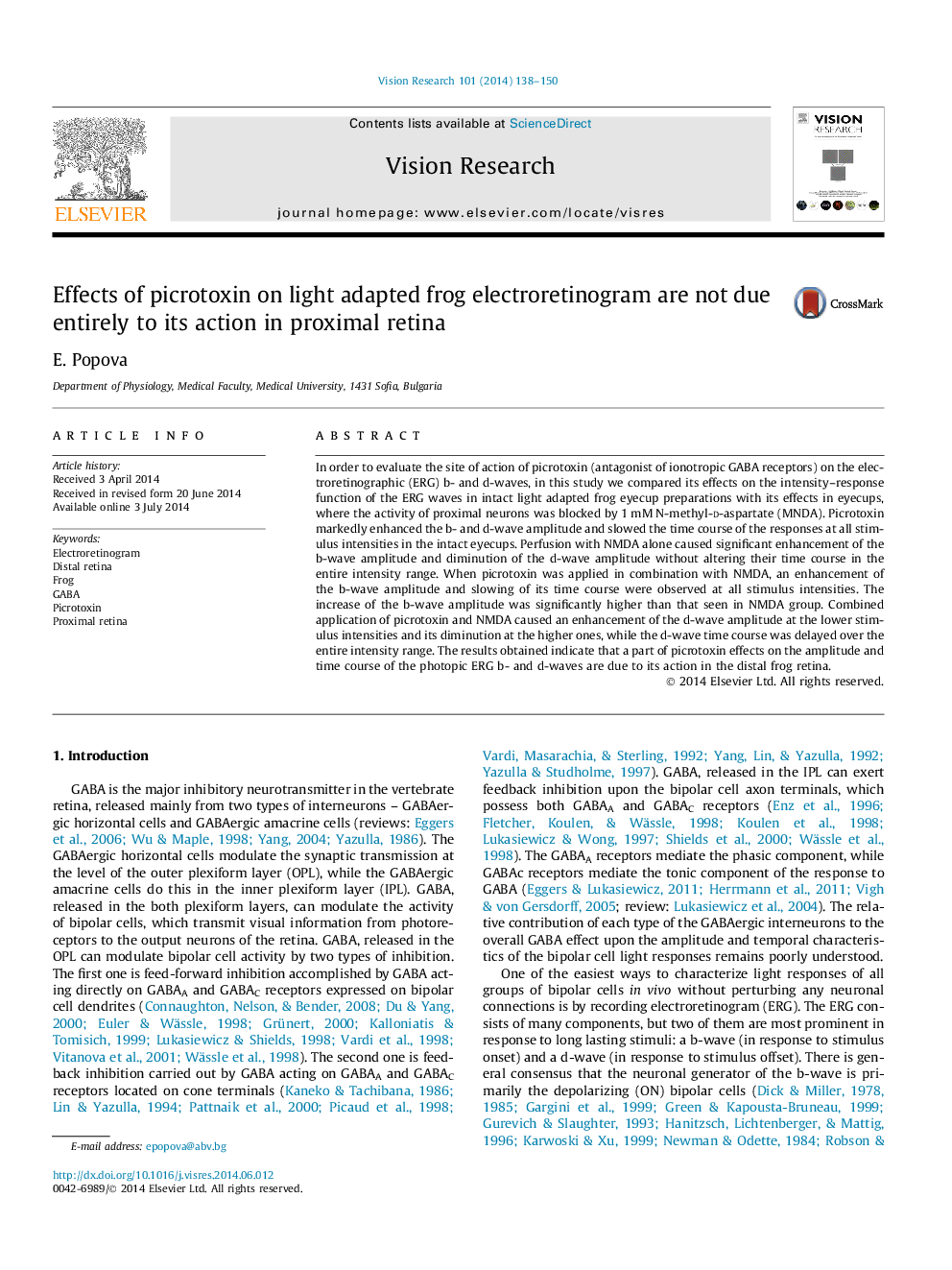| Article ID | Journal | Published Year | Pages | File Type |
|---|---|---|---|---|
| 4033721 | Vision Research | 2014 | 13 Pages |
•Picrotoxin enhanced the amplitude and delayed the time course of the b- and d-waves.•Proximal retinal blockade by NMDA did not prevent picrotoxin effects on ERG waves.•The effects of picrotoxin were expressed to a lesser extent in NMDA treated eyecups.•The results indicate that picrotoxin acts in both distal and proximal frog retina.
In order to evaluate the site of action of picrotoxin (antagonist of ionotropic GABA receptors) on the electroretinographic (ERG) b- and d-waves, in this study we compared its effects on the intensity–response function of the ERG waves in intact light adapted frog eyecup preparations with its effects in eyecups, where the activity of proximal neurons was blocked by 1 mM N-methyl-d-aspartate (MNDA). Picrotoxin markedly enhanced the b- and d-wave amplitude and slowed the time course of the responses at all stimulus intensities in the intact eyecups. Perfusion with NMDA alone caused significant enhancement of the b-wave amplitude and diminution of the d-wave amplitude without altering their time course in the entire intensity range. When picrotoxin was applied in combination with NMDA, an enhancement of the b-wave amplitude and slowing of its time course were observed at all stimulus intensities. The increase of the b-wave amplitude was significantly higher than that seen in NMDA group. Combined application of picrotoxin and NMDA caused an enhancement of the d-wave amplitude at the lower stimulus intensities and its diminution at the higher ones, while the d-wave time course was delayed over the entire intensity range. The results obtained indicate that a part of picrotoxin effects on the amplitude and time course of the photopic ERG b- and d-waves are due to its action in the distal frog retina.
Graphical abstractFigure optionsDownload full-size imageDownload high-quality image (193 K)Download as PowerPoint slide
